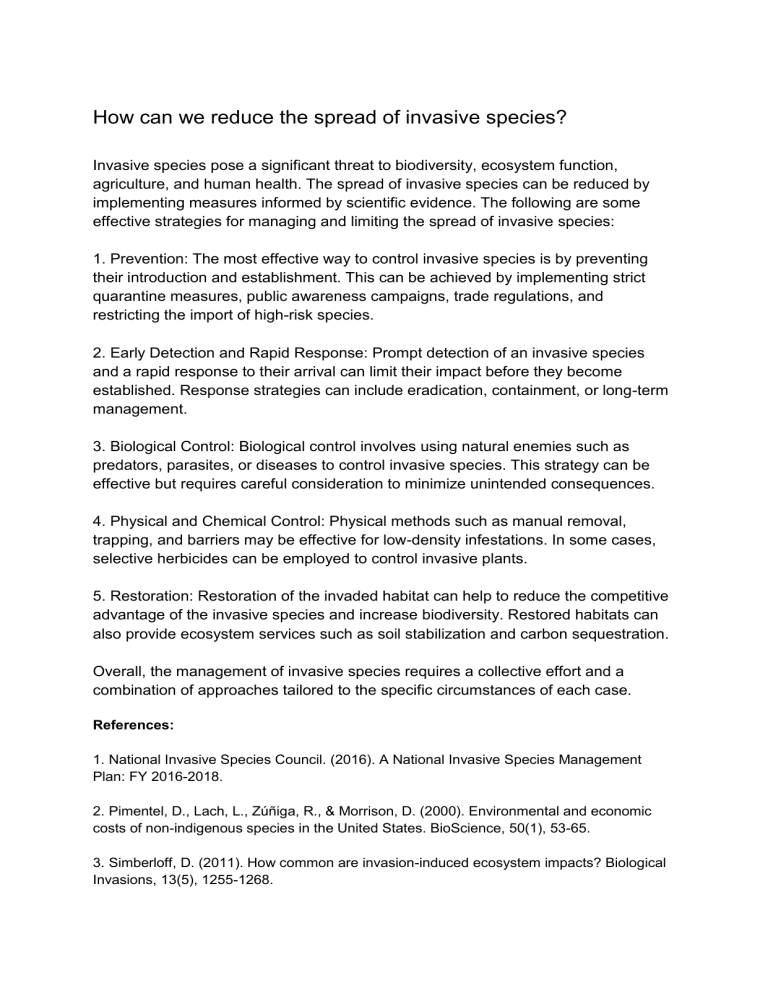
How can we reduce the spread of invasive species? Invasive species pose a significant threat to biodiversity, ecosystem function, agriculture, and human health. The spread of invasive species can be reduced by implementing measures informed by scientific evidence. The following are some effective strategies for managing and limiting the spread of invasive species: 1. Prevention: The most effective way to control invasive species is by preventing their introduction and establishment. This can be achieved by implementing strict quarantine measures, public awareness campaigns, trade regulations, and restricting the import of high-risk species. 2. Early Detection and Rapid Response: Prompt detection of an invasive species and a rapid response to their arrival can limit their impact before they become established. Response strategies can include eradication, containment, or long-term management. 3. Biological Control: Biological control involves using natural enemies such as predators, parasites, or diseases to control invasive species. This strategy can be effective but requires careful consideration to minimize unintended consequences. 4. Physical and Chemical Control: Physical methods such as manual removal, trapping, and barriers may be effective for low-density infestations. In some cases, selective herbicides can be employed to control invasive plants. 5. Restoration: Restoration of the invaded habitat can help to reduce the competitive advantage of the invasive species and increase biodiversity. Restored habitats can also provide ecosystem services such as soil stabilization and carbon sequestration. Overall, the management of invasive species requires a collective effort and a combination of approaches tailored to the specific circumstances of each case. References: 1. National Invasive Species Council. (2016). A National Invasive Species Management Plan: FY 2016-2018. 2. Pimentel, D., Lach, L., Zúñiga, R., & Morrison, D. (2000). Environmental and economic costs of non-indigenous species in the United States. BioScience, 50(1), 53-65. 3. Simberloff, D. (2011). How common are invasion-induced ecosystem impacts? Biological Invasions, 13(5), 1255-1268.




